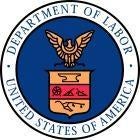Fifty years ago today, President Kennedy signed the Equal Pay Act into law. At that time, the U.S. workforce included nearly 25 million women – a third of all U.S. workers. Yet women earned an average of 59 cents on the dollar compared to their male colleagues.
“Our economy today depends upon women in the labor force,” Kennedy said when he signed the law in 1963. At that time, as incredible as it seems today, it really was legal to pay a woman less money to do the same work as a man. By signing the Equal Pay Act, Kennedy amended the Fair Labor Standards Act of 1938 and made it illegal to discriminate against women in the payment of wages.
Until 1978, when President Carter transferred enforcement responsibility to the Equal Employment Opportunity Commission, the Department of Labor enforced the act. Over 15 years, the department recovered a total of approximately $170 million in back wages for about 280,000 employees who had been denied equal pay. Today, the EEOC continues that work.
In a 1974 public service announcement, Batgirl takes on a tenacious villain: pay inequality. Click to view the video on YouTube.
We have seen progress over the past 50 years, but not enough. Today in America, a woman is paid on average about 77 to 81 cents* for every dollar paid to a man. For women of color and women with disabilities, the wage gap is even larger. This reality has major implications for women’s ability to afford essentials like food, housing and gas. Now more than ever, American families rely on the wages of women. Although women make up nearly half of the U.S. labor force and a growing percentage of household breadwinners, the wage disparity between women and men has persisted.
In 2010, President Obama created the National Equal Pay Task Force to ensure that equal pay laws are vigorously enforced throughout the country. By collaborating with our partners from the U.S. Equal Employment Opportunity Commission, Office of Personnel Management and the Department of Justice, the Department of Labor seeks to ensure working women are fairly compensated for their work.
As we chart the equal pay agenda for the next half-century, we look at strategies that empower workers to know their worth. One of the biggest obstacles to combating pay discrimination is that so many women do not know they are being underpaid due to discrimination. To address the policies and “norms” that result in pay secrecy, the administration and the Equal Pay Task Force continue to focus on the importance of collecting better data on pay.
Closing the pay gap once and for all will help millions of women and their families right now, but it also has implications for the economic future of our country. We must enable government worker protection agencies to collaborate and coordinate more effectively, and we will encourage employers to take responsibility for ensuring our nation’s workplaces offer fair pay to all workers.
Enforcement of existing civil rights laws, including the Equal Pay Act, will help. But those laws also leave gaps that must be filled. That’s why it is imperative that Congress pass the Paycheck Fairness Act, which would address loopholes in existing law, strengthen remedies for pay discrimination, increase outreach and education to working women, provide technical assistance to small businesses, ensure that employees can discuss their wages without risk of being fired, and provide additional research and resources to fight pay inequity. And we must continue to address pay discrimination within a broader framework of practices that may limit the full economic participation of women workers.
Today we attended a White House event to commemorate this important day, and our regional Labor Department colleagues are recognizing it at events around the country. As we pause to honor the anniversary of this landmark civil rights law, we also pledge to continue working until the promise of the Equal Pay Act is fulfilled.
Learn more about this issue on the department’s Equal Pay page or the White House’s Equal Pay portal.
*Estimates vary depending on whether the estimate is based on annual or weekly earnings data.


 i
i



